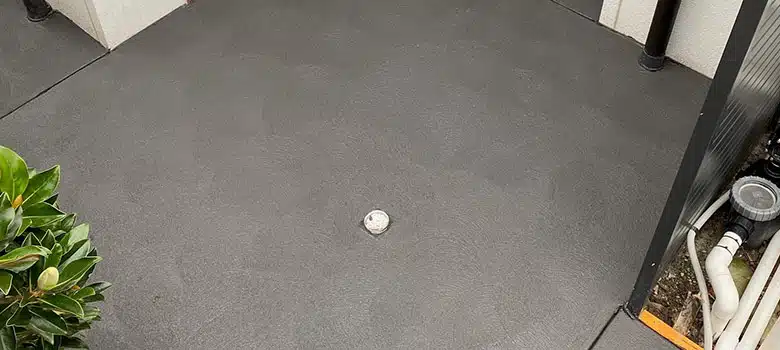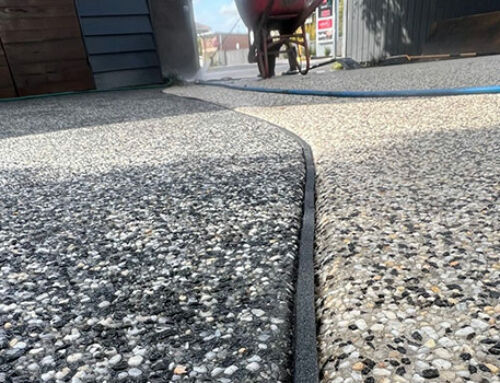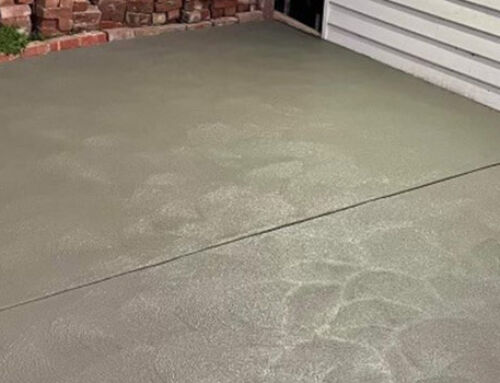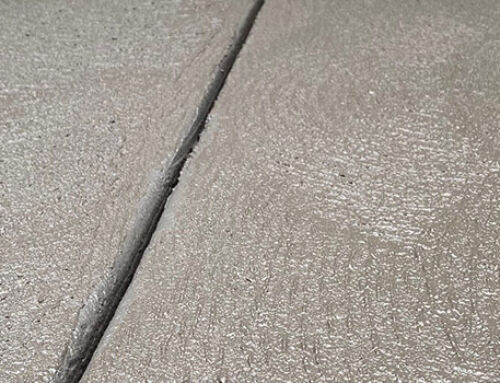The right option for your project might not be set in stone after checking out the differences between these two stellar surface materials.
Worried about a drab slab? You’re not alone.
Many Melbourne homeowners want the durability and function of a concrete driveway but are concerned that concrete will look too much like, well, concrete. The solution? There are actually several! From options for stamping to pave cut, you can style your driveway in creative ways that are also likely to turn heads.
One of the easiest and most cost-effective ways to convert typically grey concrete into a work of art is by opting for colouring. Coloured concrete is eye-catching, affordable, and designed to last just as long as plain concrete.
If the options are so amazing when it comes to coloured vs. plain concrete, how does one choose? This is largely a personal preference. Coloured concrete comes in a number of different shades from stark whites to rich browns. But there’s also a time and a place for coloured concrete.
Let’s take a closer look at both options so you can understand the process, pros, and cons behind them.
A little colour about coloured concrete
The actual process of colouring concrete is a bit of a science, but an experienced concreter will be able to get the exact hue you’re looking for at a price point that makes sense for you. Concrete is grey naturally, so any colour that’s added will have to complement or overpower the natural tones to shine through. That’s where the pigmentation process comes into play.
Coloured concrete is not the same as painted, dyed, or stained material. The concrete is literally blended onsite with a pigment made (usually) from an iron oxide. These particles wrap themselves around the cement that’s in the mix and make them appear brighter or darker than usual, giving it a distinct colour.
Colouring has to be calculated out to make sure that the right amount is added to the concrete mixture in order to produce the desired effect. This is typically determined based on the amount of cement in the mix.
(There are actually five different ways to colour concrete, but integrated pigmentation is often the most reliable, go-to choice. You can read more about the other methods in our post: How to Colour Concrete)
Of course, you won’t have to worry about all that. Instead, you’ll work with a concrete specialist who will provide you with a sampler of different colours for you to choose from. All you have to do is say yes to one of them.
Concerned about colour?
First and foremost, you don’t have to worry about fade when you work with integrated concrete, where the pigment is included in the actual mix. Some concreters might try to skimp on costs and materials by offering thrown-on colour as a solution, but this is not recommended by the experts. Thrown on colour, as the name implies, is added just at the surface level to give the concrete a different look. This is what can fade, wear down, or chip away over time, allowing the grey beneath to show through. Properly mixed and pigmented coloured concrete will maintain a rich and deep colour throughout its lifespan.
Keep in mind that colouring is also going to vary a little from the colour chart that you’re provided with. That’s because there are a number of factors at play in the mix: the water content, pigmentation, cement and sand colour, and finishing methods including sealing. All of these can slightly affect the way that the colour appears, giving you a hue that’s often close, but not quite an exact match, to the colour chart.
A note about plain concrete
There’s not too much about plain concrete that we can tell you which you’re probably not already aware of. Just like its coloured counterpart, plain concrete is a durable workhorse when it comes to foot and vehicle traffic, making it an ideal option for everything from patios and walkways to full scale driveways. But plain concrete, in all its natural grey splendour, doesn’t have to be plain at all.
Consider that adding something as simple as a texture to standard concrete can take it from smooth and plain to a surface that mimics the best stone or brickwork available. Trowling, brooming, and stamping plain concrete can give it character all of its own while still allowing the natural colour to blend into the landscape. And while you can certainly use these techniques with coloured concrete as well, adding them to a grey base might take away your need to use colour after all.
Coloured vs. plain concrete: Choosing between bold and basic
How, then, are you to choose between the two. Start by understanding exactly what’s available when it comes to colourways. When we talk about coloured concrete, we’re usually referring to:
- Tan
- Brown
- Beige
- Charcoal
- Deep Red
- Terracotta
What these colours all have in common is that none of them are too drastic. You’ll probably going to be looking at coloured concrete if you want to:
- Match or incorporate colours from the exterior of your home
- Ensure walkways stand out against the landscape for usability
- Create contrast and use it alongside traditional grey tones
- Blend in with the landscape with natural tones for a uniform finish
- Hide scratches and spills with darker colours in high traffic areas
- Reduce reflection or attention on the concrete as a whole
On the flip side, plain concrete tends to be much cheaper since you aren’t paying for the time, effort, and materials to add colouring to the mix. Expect to pay between $75-$95 per m2 for coloured concrete, compared to just $60-$85 per m2 for plain concrete. Then again, if you opt for any of the stencilling, texture, or stamping we mentioned before, those prices will be incrementally higher.
Interested in learning more? Read on: How Much Does Coloured Concrete Cost?
When you choose your colour, you will also want to think about reselling your home. Don’t choose anything too extreme or that might not have curb appeal to the general public. You might want to go with a stark deep red to match your shutters, but shutters are easily changed, whereas concrete is not. Then again, if you are going for a stone look with stamping, the effect might only be achievable and convincing if you select a terracotta or charcoal colour to compliment it.
Concept Concrete: For all your colour curiosity needs
Ultimately, choosing between coloured vs. plain concrete is an aesthetic preference that just might be swayed a bit by your budget. There’s no real difference as far as functionality, durability, or longevity between the two. It’s up to you and your home designer or contractor to determine the best fit for your façade.
If you’re looking for help or curious about colours, the team at Concept Concrete is on standby and ready to help. We’re more than just concreters. We’re designers with a modern flair who can help you choose the best materials, colours, and textures for your project to achieve the look you’re going for. We’ll do all of this while offering a free quote so you are clear on the budget right from the start – no surprises.
Get started with your new driveway, walkway, or concrete patio surface with Concept Concrete. Simply call us on 1300 366 343 to learn more and receive your very own free quote.



![Pros and Cons of Coloured Concrete [Melbourne Guide]](https://conceptconcrete.com.au/wp-content/uploads/2023/04/Pros-and-cons-of-coloured-concrete-in-Melbourne-1-500x383.jpg)
![How to Choose the Best Coloured Concrete Contractor in Melbourne [Tips and Advice]](https://conceptconcrete.com.au/wp-content/uploads/2023/04/How-to-choose-the-best-coloured-concrete-contractor-in-Melbourne-500x383.jpg)

